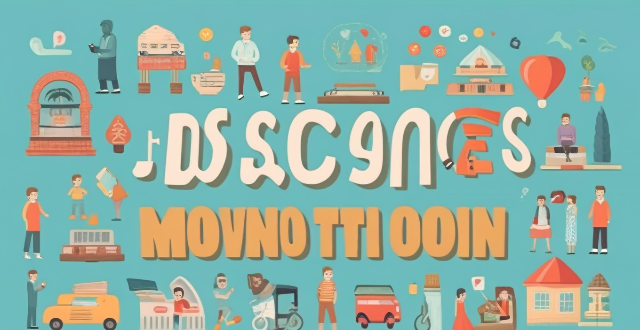Customer Media

What role does social media play in digital marketing ?
The Role of Social Media in Digital Marketing Social media has become an essential component of digital marketing, offering businesses numerous opportunities to promote their products and services online. Here are some key ways social media influences digital marketing: 1. Brand Awareness and Visibility - Increased Exposure: Social media platforms offer businesses a chance to reach a wider audience, increasing brand visibility. - Targeted Ads: Platforms like Facebook and Instagram allow for targeted advertising, ensuring that the right message reaches the right people. - Hashtags and Trending Topics: By participating in trending topics and using relevant hashtags, brands can increase their visibility and join conversations that align with their values. 2. Customer Engagement and Interaction - Direct Communication: Social media provides a platform for direct communication between businesses and customers, fostering better relationships. - Instant Feedback: Businesses can receive immediate feedback from customers, helping them improve products or services quickly. - Loyalty and Advocacy: Engaged customers often become brand advocates, promoting the business through word-of-mouth on their own social networks. 3. Content Marketing - Rich Media: Social media allows for various forms of content, including images, videos, and articles, making it easier to engage users. - Storytelling: Brands can use social media to tell stories that resonate with their audience, creating an emotional connection. - Influencer Collaborations: Partnering with influencers can help extend a brand's reach and credibility among specific demographics. 4. Lead Generation and Conversion - Promotions and Discounts: Social media is an effective channel for promoting sales and discounts, driving traffic to websites or physical stores. - Contests and Giveaways: These activities not only generate excitement but also encourage user-generated content, further expanding a brand's reach. - Retargeting: Through retargeting ads, businesses can remind potential customers of their interest in a product or service after they've interacted with the brand online. 5. Data Collection and Analysis - Insights and Analytics: Most social media platforms provide analytics tools that offer valuable insights into customer behavior and preferences. - Audience Segmentation: By analyzing social media data, businesses can segment their audience and tailor their marketing efforts accordingly. - Competitive Analysis: Social media also allows businesses to monitor competitors' activities and strategies, helping them stay ahead in the market. In conclusion, social media plays a multifaceted role in digital marketing, from enhancing brand visibility to facilitating customer interactions and generating leads. As technology continues to evolve, so will the ways in which social media influences digital marketing strategies.

How can sports marketing help to build customer loyalty ?
Sports marketing is a powerful tool that can build customer loyalty by leveraging the emotional connection between fans and their favorite teams. Strategies include sponsorships, promotions, giveaways, and social media engagement to create a sense of shared identity and community among customers. Examples include Nike's sponsorship of the Brazilian national football team, Coca-Cola's partnership with the Olympic Games, Budweiser's "Up for Whatever" campaign, McDonald's "McRib" promotion during the World Series, ESPN's social media presence, and Red Bull's extreme sports content on social media channels. By establishing themselves as trusted partners of popular sports teams and events, businesses can increase customer loyalty and brand recognition.

How do I contact customer service for my mobile operator ?
How to Contact Customer Service for Your Mobile Operator

How can I compare different online shopping sites for their customer service ?
In this article, we discuss how to compare different online shopping sites for their customer service. The first step is to research and gather information by reading reviews and testimonials, checking social media presence, and asking for recommendations from friends or family. The second step is to analyze the information by comparing customer service options, evaluating response time, and assessing quality of service. The final step is to make a decision based on weighing pros and cons and trying before you buy. By following these steps, you can choose an online shopping site that offers excellent customer service and meets your needs.

How does social media influence consumer behavior ?
Social media has transformed consumer behavior by increasing brand awareness, influencing purchasing habits, and changing perceptions of brands. It enables consumers to compare products, share feedback, and engage with companies directly. Social media also plays a crucial role in product development by providing insights into consumer needs and preferences. Companies can foster customer loyalty through engagement and exclusive deals on these platforms. The rise of social commerce allows for direct purchases within apps and live streaming sales events. Personalization and targeted marketing, including influencer collaborations, further impact consumer choices. Overall, social media's influence on consumer behavior is significant and continues to evolve with technological advancements.

What is the relationship between sports sponsorships and media coverage ?
Sports sponsorships and media coverage are interdependent entities that significantly impact the promotion of sporting events and athletes. This article explores their relationship, including how each influences the other and their collective impact on the sports industry. Sports sponsorships offer benefits such as increased exposure, brand awareness, targeted marketing, customer loyalty, and corporate social responsibility. Media coverage amplifies these benefits by increasing visibility, enhancing brand image, improving ROI, creating opportunities for storytelling, and amplifying promotional efforts. The relationship between sports sponsorships and media coverage is mutually beneficial, with each entity contributing to the success of the other. To maximize this relationship's benefits, sports organizations and sponsors must collaborate to create captivating stories and experiences that attract media attention and consumer interest.

What kind of customer feedback has been received so far for the new product ?
The new product has received mostly positive feedback, withThe new product has received mostly positive feedback, with user-friendly interface, speed However, there have been concerns about compatibility issues, software bugs, and pricing. Some customers also mentioned the need for additional features and improvements in customer support services. Overall, the feedback will be used to make necessary improvements and meet customer expectations.

How do you create a successful social media marketing campaign ?
Creating a successful social media marketing campaign requires a strategic approach that involves careful planning, execution, and monitoring. The key steps include defining goals, knowing your audience, choosing the right platforms, creating compelling content, utilizing paid advertising, engaging and interacting with your audience, and monitoring and analyzing performance. By following these steps, you can create a successful social media marketing campaign that not only meets your objectives but also establishes a strong online presence for your brand.

How can automation be used to improve customer service ?
Automation can significantly enhance customer service by streamlining processes, reducing errors, and providing consistent support. It enables personalized communication through chatbots and email automation, efficient processes via self-service options and backend automation, a consistent experience with standardized responses, cost-effective solutions through scalability, and continuous improvement using feedback loops. As technology progresses, the potential for automation in customer service will continue to expand, leading to more innovative ways to meet customer needs.

How does Fintech improve customer experience in banking ?
Fintech has transformed the banking industry by providing innovative solutions that improve customer experience. It offers personalized services, faster transactions, enhanced security, and innovative features. Fintech companies provide a seamless user interface, personalized financial advice, customized products, faster transactions, instant access to information, streamlined processes, robust security measures, transparent fees, regulatory compliance, mobile payments, peer-to-peer lending, crowdfunding, and exploration of cryptocurrencies and blockchain technology. These advancements have significantly improved customer experience in banking and will continue to shape the future of banking as technology evolves.

How can I improve my social media engagement ?
To improve social media engagement, create high-qualityTo improve social media engagement, create high-quality audience, collaborate with other accounts collaborate with other accounts, use hashtags strategically, and analyze your performance regularly.

How can women leverage social media to promote their businesses ?
Social media offers a powerful platform for women entrepreneurs to promote their businesses. To effectively leverage it, they should define their brand story, choose the right platforms, build a strong presence, engage with their audience, collaborate with other women entrepreneurs, utilize influencer marketing, and monitor performance through analytics. By following these strategies, women can harness the power of social media to elevate their businesses, connect with customers, and achieve their entrepreneurial dreams.

What are the most effective strategies for social media marketing ?
Effective Strategies for Social Media Marketing Social media marketing is crucial for modern businesses to connect with customers, build brand awareness, and increase sales. To achieve these goals, it's important to define your objectives, understand your audience, choose the right platforms, create engaging content, use visuals, leverage influencers, monitor performance, and stay active and engaged with your audience. By implementing these strategies, businesses can create a successful social media marketing strategy that drives results and builds long-term relationships with customers.

What role does social media play in product review dissemination ?
The article discusses the significant role of social media in product review dissemination. It highlights the concept of "social proof" where people trust and adopt a product seeing others using it and sharing positive reviews. Social media platforms provide a platform for users to share their experiences with products, both good and bad, which can greatly influence potential customers' purchasing decisions. User-generated content (UGC) is a powerful tool for brands looking to promote their products. By encouraging customers to share their experiences with a product on social media, brands can leverage the power of social proof to attract new customers. Influencer marketing is another way that social media affects product review dissemination. Brands partner with influencers who have large followings on social media platforms to promote their products. Online reviews have become an essential part of the purchasing process for many consumers. Social media platforms provide a space for users to share their thoughts and opinions about products, allowing potential customers to make informed decisions before making a purchase. The trustworthiness, variety of opinions, and timeliness of online reviews greatly impact a consumer's decision to purchase a product or not. In conclusion, social media plays a crucial role in product review dissemination by providing a platform for users to share their experiences with products, promoting user-generated content and influencer marketing, and facilitating the sharing of online reviews.

What is the role of social media in sports marketing ?
The article explores the role of social media in sports marketing, highlighting its ability to engage with fans, promote events, and build brand awareness. It suggests that by producing high-quality content and engaging with followers, sports organizations can increase their online presence and attract new fans. The article also discusses strategies for promoting events on social media, such as targeted advertising and word-of-mouth marketing. Overall, it emphasizes the importance of social media in modern sports marketing and encourages teams to leverage these platforms to reach their target audience.

Which shopping apps have a strong focus on customer service and support ?
The provided text discusses the importance of customer service and support in shopping apps. It then goes on to highlight five notable shopping apps—Amazon, Shopify, Etsy, eBay, and Alibaba—that prioritize these aspects. Each app is described in terms of its unique features and services that enhance user experience. For Amazon, it's the live chat and email support, 24/7 availability, and the Mayday button for Fire devices users. Shopify is praised for its multichannel support, extensive knowledge base, and active community forums. Etsy is lauded for its personalized assistance, seller education, and resolution center. eBay's detailed resolution process, security measures, and seller protections are highlighted. Lastly, Alibaba is commended for its Trade Assurance program, legal services, and supplier verification. In conclusion, these shopping apps understand the significance of supporting their users throughout the shopping journey, each offering unique strengths in customer service and support.

What are the psychological effects of social media on teenagers ?
This article discusses the psychological effects of social media on teenagers, including increased anxiety and depression due to comparison with others' lives, fear of missing out (FOMO), cyberbullying, disrupted sleep patterns, decreased face-to-face interaction, body image issues, and cyberchondria. Parents and educators should monitor their children's social media usage and encourage healthy habits to help them navigate these challenges.

How do celebrities use social media to engage with their fans ?
Celebrities use social media to engage with fans through personal updates, interactive posts, live streaming, collaborations, promotional campaigns, and direct messaging.

How do you measure the success of a sports marketing campaign ?
Measuring the success of a sports marketing campaign is crucial. Metrics include increased brand awareness, improved sales and revenue, customer loyalty, enhanced brand image, media coverage, sponsorship value, and positive stakeholder feedback. These metrics provide insights for adjusting strategies.

How has social media impacted public climate awareness ?
In this topic summary, we examine the multifaceted impact of social media on public climate awareness. We explore how social media amplifies climate conversations, facilitates education and awareness campaigns, spreads misinformation and echo chambers, and fosters community building and collaboration. While social media has increased visibility and accessibility of climate-related content, it also presents challenges such as misinformation and polarized discourse. To harness its full potential, promoting accurate information and constructive dialogue is crucial for driving action towards a more sustainable future.

What strategies do retailers use to attract customers during the Double 11 Shopping Carnival ?
Retailers employ various strategies to attract customers during the Double 11 Shopping Carnival, including pre-sale promotions, limited-time offers, free shipping and returns, bundling products, social media promotions, personalization and customization, and excellent customer service. These tactics aim to create excitement, build trust, and provide a tailored shopping experience for customers, ultimately maximizing sales and fostering long-term relationships.

What role does media play in shaping our perception of cultural diversity ?
This article explores the significant role of media in shaping our perception of cultural diversity. It highlights how media exposure to different cultures, representation of cultural diversity, and influence on attitudes and beliefs contribute to understanding and appreciation of cultural diversity. The article encourages critical thinking and active seeking out of diverse perspectives to promote a more inclusive society.

How do celebrities use social media to promote their personal brand ?
Celebrities use social media to promote their personal brand by being authentic, engaging with fans, collaborating with others, maintaining consistent brand messaging, and promoting their own projects.

How does sports culture shape the media industry ?
Sports culture significantly impacts the media industry by influencing content, formats, and business models. This influence is evident across various media platforms, including news coverage, advertising strategies, social media engagement, and more. The prioritization of sports news, specialized reporting, live broadcasting, brand integration, athlete endorsements, and fan interaction are just some examples of how sports culture shapes the media landscape. Additionally, the growth of fantasy sports and gamification further integrates sports into media consumption. As both industries continue to evolve, their relationship is expected to grow stronger, with sports culture remaining a central force in shaping the media industry.

How has social media impacted the entertainment industry ?
The text discusses the impact of social media on the entertainment industry. It mentions that social media has increased accessibility to content, changed content creation, made it possible for audiences to interact with creators, become a crucial tool for marketing and promotion, and created new revenue streams. The text concludes that social media has had a profound impact on the industry and will continue to shape its future.

How has social media influenced environmental awareness campaigns ?
The text discusses how social media has revolutionized communication and information sharing, particularly in the context of environmental awareness campaigns. It outlines various ways in which social media has impacted these campaigns, including increased visibility, interactivity, accessibility, influence of celebrities and influencers, real-time updates, and crowdsourcing and fundraising opportunities. The text concludes that social media is an essential tool for promoting environmental causes and will likely continue to play a significant role in shaping our understanding of the environment and inspiring action.

What are the benefits and drawbacks of social media marketing for small businesses ?
Social media marketing offers small businesses increased brand awareness, cost-effective marketing, targeted advertising, customer engagement, and a competitive edge. However, it also presents challenges such as being time-consuming, facing negative feedback, difficulty in measuring ROI, dependency on algorithm changes, and cybersecurity risks. Small businesses should consider these factors when deciding whether to incorporate social media marketing into their overall strategy.

How can parents monitor their children's social media use effectively ?
Social media has become an integral part of children's lives, posing risks like cyberbullying and inappropriate content exposure. Effective monitoring by parents is crucial for ensuring their safety. Strategies include establishing open communication, educating children about online safety, using parental control tools, setting boundaries and limits, encouraging offline activities, and staying involved and updated. These measures can foster trust and understanding while promoting safe and responsible social media use among children.

What role does social media play in modern journalism ?
The Role of Social Media in Modern Journalism Social media has become an integral part of modern journalism, playing a significant role in the way news is gathered, distributed, and consumed. Here are some key ways social media influences journalism: 1. Breaking News and Real-Time Updates 2. Audience Interaction and Feedback 3. Investigative Journalism 4. Verification and Fact-Checking 5. Distribution and Content Promotion 6. Brand Building for Journalists 7. Monetization Opportunities 8. Ethical Considerations Overall, social media has reshaped journalism by providing new avenues for storytelling, audience engagement, and distribution. However, it also poses challenges related to accuracy, ethics, and the commercial aspects of news dissemination. Journalists must navigate these complexities to leverage social media effectively while maintaining the integrity of their craft.